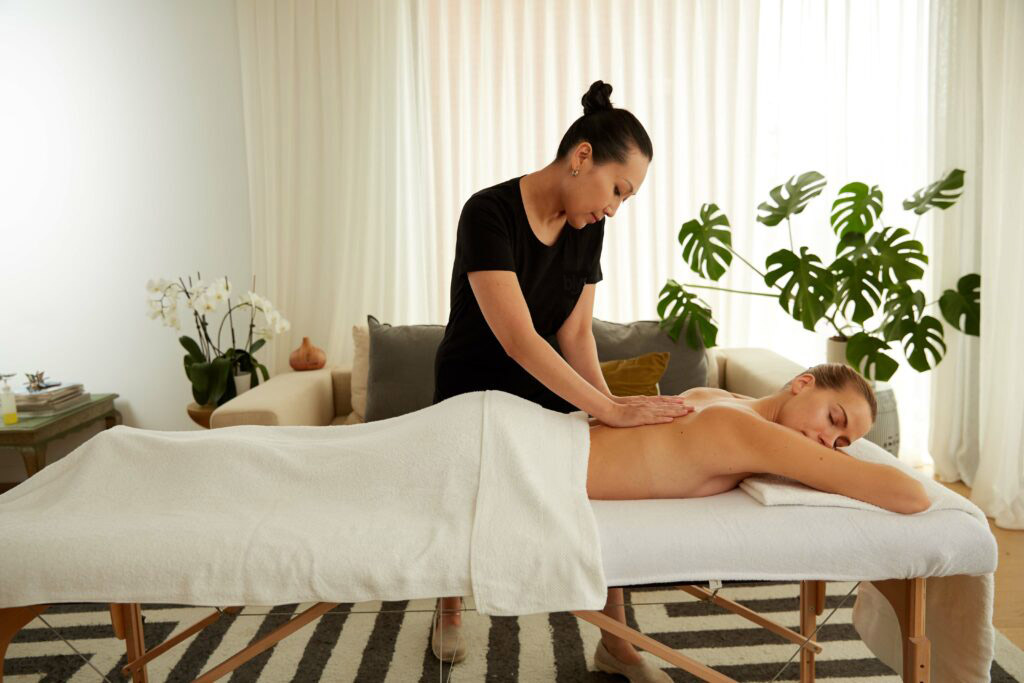
For centuries, massage therapy has been a go-to for people who want to relax, rejuvenate, and get rid of those pesky little knots. But what’s actually happening underneath the surface when those skilled hands work their magic? Let’s dive into the science behind massage therapy and discover how it actually benefits your body.
How Your Body Responds: The Biology
Before getting into the nooks and crannies of the impact that massage therapy can have, it’s important to know how it works on a physiological level. Know that feeling of relief you get as soon as those professional hands put pressure on you? This very pressure helps circulate blood through congested areas, enabling blood to flow into your muscles and tissues, aiding in the removal of metabolic waste.
The circulatory boost doesn’t stop there. Increased blood flow also helps to deliver essential nutrients and oxygen to your muscles. This is crucial because muscles, especially those that have been strained or overused, require a steady supply of nutrients and oxygen to repair and grow stronger. By enhancing circulation, massage therapy supports the body’s natural healing processes, helping to reduce soreness and speed up recovery times.

The Role of Endorphins: Nature’s Pain Relievers
One of the immediate benefits of massage therapy is the release of endorphins. These are the body’s natural painkillers and mood elevators. When pressure is applied during a massage, your brain triggers the release of endorphins, which helps alleviate pain and induce relaxation. This is why you often feel a sense of euphoria and pain relief after a good massage. Endorphins not only block pain signals but also interact with the opiate receptors in the brain to reduce the perception of pain. This makes massage therapy an effective complementary treatment for chronic pain conditions, such as fibromyalgia and arthritis, providing a natural way to manage pain without relying on medication. A review in the International Journal of Neuroscience highlighted that massage therapy could increase endorphin levels by up to 30%, offering a significant natural boost to pain management and mood enhancement.
Stress Hormone Reduction: Cortisol and Its Effects
Another significant impact of massage therapy is the reduction of cortisol levels in the body. Cortisol is often referred to as the stress hormone, and high levels can lead to numerous health issues, including anxiety, depression, and cardiovascular problems. Regular massage sessions have been shown to significantly lower cortisol levels, which can help reduce stress and its associated risks. When cortisol levels drop, the body enters a state of relaxation and recovery. This not only helps to calm the mind but also has a range of physical benefits. Lower cortisol levels are associated with reduced blood pressure, improved immune function, and a decrease in inflammatory processes. Research from the Journal of Bodywork and Movement Therapies found that massage therapy can reduce cortisol levels by an average of 31%, highlighting its powerful effect on stress reduction and overall health improvement. By managing stress effectively, massage therapy can help to prevent a host of stress-related health issues.
Enhancing Flexibility and Range of Motion
Massage therapy can also improve flexibility and range of motion by working on the muscles, connective tissues, tendons, ligaments, and joints. This is particularly beneficial for athletes or anyone with a physically demanding lifestyle. When muscles are tight and tense, they can restrict movement and increase the likelihood of strains and sprains. Regular massage helps to keep muscles supple and joints flexible, ensuring that the body can move more freely and efficiently. A study published in the American Journal of Physical Medicine & Rehabilitation found that massage therapy improved joint range of motion by 13% in participants with muscle stiffness after just five sessions. This is not just beneficial for athletes but for anyone who wants to maintain a healthy, active lifestyle.
By addressing areas of muscle tension and improving circulation, massage therapy facilitates better movement patterns and reduces discomfort associated with stiffness. Enhanced flexibility through regular massage can lead to better overall physical performance and quicker recovery times. For those engaged in rigorous physical activity or long periods of sitting, incorporating massage into a routine can be a proactive approach to managing and preventing physical discomfort.
Immune System Boost
Believe it or not, massage therapy can also give your immune system a boost. Studies have shown that regular massage can increase the activity level of the body’s natural “killer cells” which are crucial to the immune system. This increase in activity helps your body to fend off infections and diseases more effectively. Moreover, massage therapy also enhances lymphatic circulation. The lymphatic system, which includes lymph nodes and vessels, plays a key role in transporting immune cells and removing waste products from the body. Improved lymphatic flow through massage helps ensure that immune cells are efficiently distributed and can respond more effectively to pathogens.
Regular massage can also help reduce inflammation to maintain a balanced immune response and reduce the risk of chronic conditions that can compromise immune health. Overall, incorporating massage into your wellness routine can strengthen your immune system and contribute to better overall health.
Improving Posture
In today’s digital age, poor posture is a common issue due to long hours spent sitting or looking at screens. Massage therapy can help address postural imbalances by relieving tension in overworked muscles and strengthening those that are weak. This holistic approach helps to correct and improve posture, reducing pain and preventing future issues.
Poor posture can lead to a variety of problems, including chronic back pain, neck pain, and even headaches. By targeting specific muscle groups that are prone to tension and strain, massage therapy helps to realign the body and promote better posture. This not only alleviates existing pain but also prevents the posture from further deterioration.
Promoting Better Sleep
Massage therapy can greatly improve the quality of your sleep. By reducing stress and promoting relaxation, it helps regulate your sleep patterns, making it easier to fall asleep and stay asleep. Improved sleep not only enhances overall health but also boosts mental clarity and energy levels.
Sleep is essential for the body’s recovery and repair processes. Poor sleep can lead to a range of health issues, including weakened immunity, weight gain, and decreased cognitive function. Research in the Journal of Clinical Rheumatology found that individuals who received regular massages for 30 minutes or more experienced a 33% improvement in sleep quality. By fostering relaxation and reducing stress, massage therapy helps to create the ideal conditions for restful, restorative sleep.
How Blys Can Help
At Blys, we understand the profound benefits of massage therapy and are committed to bringing these benefits directly to you. Our network of skilled therapists are available to provide in-home massage services, making it easier than ever to incorporate regular massages into your routine. Whether you’re looking to alleviate pain, reduce stress, improve flexibility, or boost your immune system, Blys can connect you with a professional who will tailor their services to meet your specific needs.
With Blys, you can enjoy the healing touch of massage therapy in the comfort and privacy of your own home. Simply book an appointment online, and a qualified therapist on our platform will come to you at your convenience. Experience the science-backed benefits of massage therapy without the hassle of traveling to a spa or clinic. Treat your body to the care it deserves with Blys.




